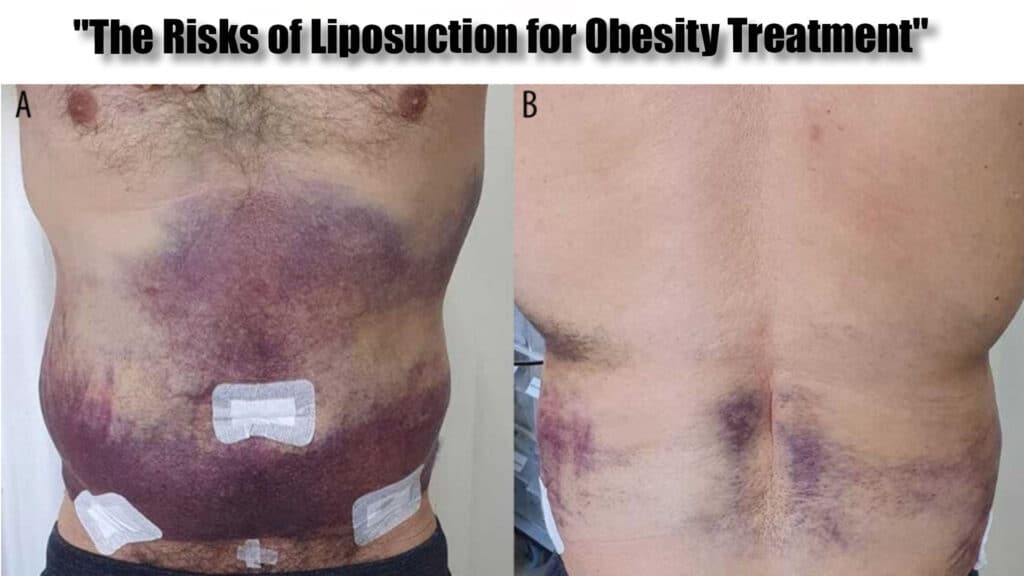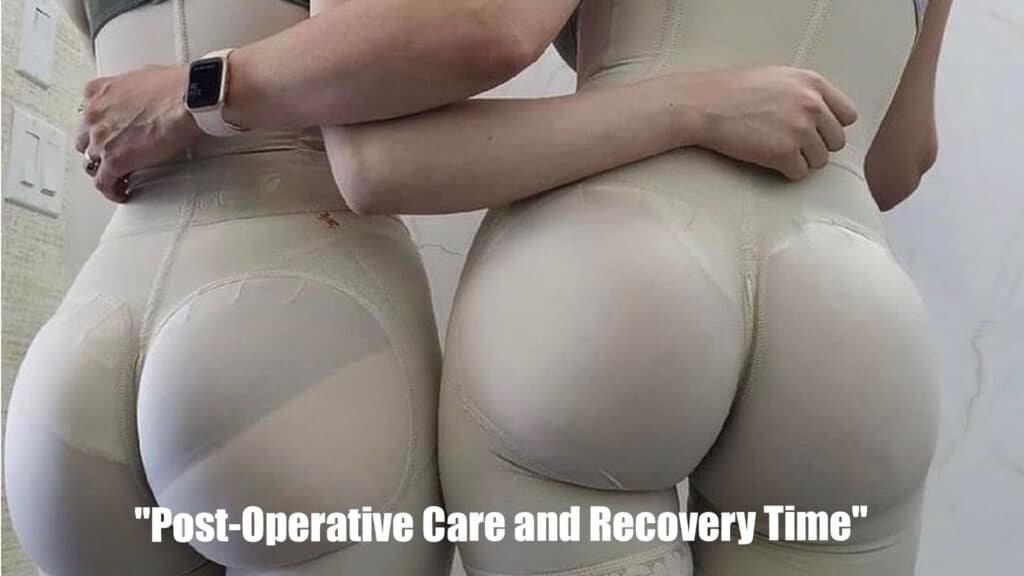
- February 5, 2023
- 7:50 pm
“A New Approach to Obesity: The Good of Liposuction”
Table of Contents
Obesity is a growing problem in every country, with a high percentage of the population suffering from this condition. While diet and exercise are the most common methods of weight loss, they are not always effective, especially in cases of severe obesity. In such cases, liposuction may be recommended as a surgical solution. But can liposuction really be used to treat obesity?

Introduction
Liposuction is a surgical treatment used to remove excess fat from certain body locations. It is commonly used to improve body contours and achieve a more aesthetically pleasing appearance. However, it is not a weight loss solution and should not be considered a treatment for obesity. Despite this, some people with severe obesity may be recommended liposuction as a way to reduce their overall body fat and improve their health. In this article, we’ll explore the use of liposuction for obesity treatment and what patients can expect from the procedure.

What is Liposuction?
Liposuction is a common surgery used to eliminate extra fat from certain body regions. It is usually done under general anesthesia and involves making small incisions in the skin through which a cannula is inserted. The cannula is then used to suction out the excess fat, leaving the treated area looking slimmer and more toned.
Liposuction can be performed on a variety of areas of the body, including the abdomen, hips, thighs, arms, and neck. The procedure is typically performed on patients who are in good overall health and have a stable weight, but who are unhappy with pockets of stubborn fat that are resistant to diet and exercise.

How is Liposuction Used to Treat Obesity?
Liposuction is not a weight loss method and should not be used to treat obesity. However, in cases of severe obesity, liposuction may be recommended as a way to remove large amounts of fat from specific areas of the body. This can improve the patient’s overall health and well-being by reducing their overall body fat and improving their body contours.
The procedure is typically performed on many areas of the body, such as the abdomen, hips, thighs, or arms. The surgeon’s ability and experience, as well as the patient’s general health and safety, restrict the quantity of fat that can be removed during liposuction.

Benefits of Liposuction for Obesity Treatment
There are several benefits to using liposuction for obesity treatment, including:
- Significant reduction in body fat: Liposuction can remove large amounts of fat from specific areas of the body, which can result in a significant reduction in overall body fat.
- Improved health and well-being: By reducing overall body fat, liposuction can improve a patient’s health and well-being. This can help to lower the risk of obesity-related health issues like heart disease, diabetes, and high blood pressure.
- Improved body contours: Liposuction can result in a more aesthetically pleasing appearance, with improved body contours and a slimmer, more toned look.
- Quick recovery time: Unlike some other weight loss procedures, liposuction typically has a quick recovery time, with patients able to return to normal activities within a few days of the procedure.

Risks of Liposuction for Obesity Treatment
As with any surgical procedure, there are risks associated with liposuction for obesity treatment, including:
- Anesthesia risks: Liposuction is typically performed under general anesthesia, which carries its own risks, such as allergic reactions and breathing difficulties.
- Infection: There is always a risk of infection with any surgical procedure, and liposuction is no exception. Patients are advised to take steps to reduce their risk of infection, such as keeping the incision site clean and dry and taking antibiotics as prescribed.
- Bleeding: Bleeding can occur during or after liposuction, and in some cases, this can lead to hematoma (a collection of blood) in the treated area.
- Scarring: Liposuction involves making small incisions in the skin, and these can result in scarring. In most cases, the scars will fade over time and be less noticeable.
- Numbness or tingling: Some patients may experience numbness or tingling in the treated area after liposuction, which can take several months to resolve.
- Contour irregularities: In some cases, liposuction can result in contour irregularities in the treated area, such as dimpling, lumps, or unevenness. This can be due to uneven fat removal or the healing process.

Post-operative Care and Recovery Time
After liposuction, it is important to take steps to ensure a smooth recovery and minimize the risk of complications. Patients should follow the instructions of their surgeon, including:
- Wearing a compression garment: Wearing a compression garment can aid in the reduction of swelling and the improvement of the contours of the treated region.
- Taking pain medication: Pain medication may be prescribed to help manage discomfort after liposuction.
- Avoiding strenuous activity: Patients should avoid strenuous activity for several weeks after liposuction to allow the treated area to heal properly.
- Keeping the incision site clean and dry: Patients should keep the incision site clean and dry to reduce the risk of infection.
- Following up with their doctor: Patients should follow up with their doctor as advised to monitor their progress and address any concerns.
Most patients are able to return to normal activities within a few days of liposuction, but it may take several weeks for the treated area to fully heal. In some cases, it may take several months for the final results of the procedure to be visible.
Conclusion
Liposuction can be a useful tool for treating severe obesity, but it is important to understand that it is not a weight loss solution. Patients should only consider liposuction if they are in good overall health and have a stable weight, and they should only undergo the procedure with a qualified and experienced surgeon.
If you’re considering liposuction for obesity treatment, it’s important to have a realistic understanding of the benefits and risks of the procedure, as well as what to expect during post-operative care and recovery. By working with a trusted and experienced surgeon and following their instructions, you can help to ensure a successful outcome and achieve the results you’re looking for.

FAQ
How much weight can be lost through liposuction for obesity treatment?
Liposuction is not a weight loss procedure, it’s a body contouring procedure. The amount of fat removed during liposuction is typically limited to ensure safety and is typically less than 5-10 pounds. The goal of liposuction for obesity treatment is not to significantly reduce weight but to target specific areas of stubborn fat that don’t respond to diet and exercise.
Is liposuction for obesity treatment covered by insurance?
Insurance coverage for liposuction for obesity treatment varies depending on the insurance provider and individual policy. In general, liposuction is considered a cosmetic procedure and is not covered by insurance. Patients are advised to check with their insurance provider to determine their specific coverage.
How many liposuction sessions are needed for obesity treatment?
The number of liposuction sessions needed for obesity treatment depends on the individual’s specific needs and goals. In some cases, one session may be sufficient, while in other cases, multiple sessions may be necessary. The decision on the number of sessions will be made during a consultation with a plastic surgeon, who will assess the individual’s condition and determine the best course of treatment.
Is liposuction for obesity treatment permanent?
Liposuction for obesity treatment can result in permanent removal of fat cells in the treated area. However, it’s important to maintain a healthy diet and exercise regularly to prevent new fat cells from forming and to maintain the results of the procedure. If an individual gains weight after liposuction, the remaining fat cells in the body can expand, potentially affecting the results of the procedure.
What is the typical cost of liposuction for obesity treatment?
The cost of liposuction for obesity treatment varies depending on many factors, including the surgeon’s experience, the location of the practice, the number of areas being treated, and the type of liposuction being performed. On average, the cost can range from $3,000 to $4,000 or more. Patients should schedule a consultation with a plastic surgeon to obtain a more accurate estimate for their specific case.
Is liposuction for obesity treatment safe for all individuals?
Liposuction for obesity treatment is not safe for everyone. Individuals who are significantly overweight, have certain medical conditions, or have poor skin elasticity may not be good candidates for liposuction. A thorough medical evaluation by a qualified plastic surgeon is necessary to determine if liposuction is safe and appropriate for each individual.
Are there any non-invasive alternatives to liposuction for obesity treatment?
es, there are non-invasive alternatives to liposuction for obesity treatment. Some popular options include CoolSculpting, ultrasound-assisted liposuction, and laser lipolysis. These procedures use technology to remove fat without the need for incisions or surgery. However, it’s important to note that non-invasive alternatives may not provide the same results as liposuction and may require multiple sessions to achieve desired results. Consulting with a qualified plastic surgeon is recommended to determine the best option for each individual.
Can I combine liposuction with non-invasive technics to treat obesity?
Yes, it is possible to combine liposuction with non-invasive techniques to treat obesity. This approach can help to achieve more comprehensive results and address a wider area of concern. However, combining these treatments should be done under the supervision of a qualified plastic surgeon to ensure safety and optimal outcomes.
Reference:










